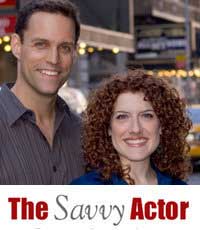 Written by Sean Pratt
Written by Sean Pratt
When organizing the information that goes on your advertising materials, it’s important to understand the concepts of “chunking” and “stickiness.”
From the worlds of psychology and sociology come two important ideas that are used by graphics designers to create memorable and effective advertising. Although given the odd names of “chunking” and “stickiness”, they are nevertheless great ideas that you can use when designing the layout and presentation of postcards, flyers, posters and even your picture/resume; the most important piece of advertising you have! Once you understand these two theories your marketing materials should start getting the attention they deserve.
Chunking
The method of combining information into a smaller number of groups that are easier to understand and remember is called “chunking.” It refers to how we use our short term memory in relation to things like phone numbers or lists of items. We break a large amount of information down into chunks of about four things for each group. When it’s important for people to recall certain information, you should consider chunking the relevant items together.
Let’s say you want to create a flyer for the show you’re currently in. Don’t overload it with too much information, either visually or text wise. Chunk the show times, location and contact info together, perhaps in a text box off in one corner. If you’ve included a review or two, visually chunk them together by using a different font than the rest of the text. Make sure you include no more than three pictures of you; perhaps, two of you in the show and certainly a thumbnail of your headshot…this visual anchor will remind them of what you look like out of costume.
Stickiness
In his book The Tipping Point: How Little Things Can Make a Big Difference, author Malcolm Gladwell coined the phrase “stickiness” which is the ability of an idea to become stuck in our collective brains. If something can be heard, touched or seen, it has the ability to become sticky, like an icon, product or advertisement. He identified six areas that should be considered when trying to create something sticky.
Here they are along with an example:
- Simplicity – The ability to communicate an idea as concisely as possible without losing its core meaning. If you were a voice over artist who wanted to highlight the fact that you have your own studio, you could create a slogan like, “Sean Pratt – The Right Voice…Right Now!”
- Surprise – The idea grabs the viewer’s attention by having the element of surprise in it. If you were playing Gary, the real estate agent in Michael Frayn’s Noises Off!, you might create a headline for your flyer that reads, “Sean Pratt sleeps with his leading lady, juggles plates of sardines and falls down a flight of stairs…8 times a week!”
- Concreteness – The idea uses plain language in order to be as specific and concrete as possible. Put all the important info for your upcoming cabaret show in its own clearly defined space on the flyer or postcard using an easy to read font.
- Credibility – The idea is believable because it is communicated by a trusted source. If you can pull a great quote from a recent review by a known critic, use it in conjunction with your flyers.
- Emotion – The idea brings out an emotional response from the viewer. If you are a comedic actress, then using humorous pictures and language in your ads will help reinforce the positive emotions people have about you and your work.
- Story – You create a narrative that the idea inhabits. This helps the viewer to more easily remember what was communicated. If you’ve taken the time to create a quarterly newsletter, you should give it a title and write content that does more than simply inform the reader about what you’ve done recently. “The Continuing Sojourns of Sean Pratt” communicates the idea that you’re always working and always moving forward, especially if the tone of your writing is a bit more intimate than a regular postcard.
Sean Pratt, (AEA / SAG / AFTRA), has been a working actor for over 20 years. Sean was a member of the resident acting company at The Pearl Theatre, an Off-Broadway classical repertory theatre and has also performed at numerous regional theatres around the country. Major films include – Gods and Generals, Tuck Everlasting and Iron Jawed Angels. Television work includes – The host of HGTV’s, Old Homes Restored, and supporting roles on Homicide, The District and America’s Most Wanted. Audiobooks – He’s narrated for 15 years and has recorded nearly 550 books in just about every genre. He also teaches classes on and writes articles about the business of the Biz.





I especially like this article!
Thanks Dee 🙂